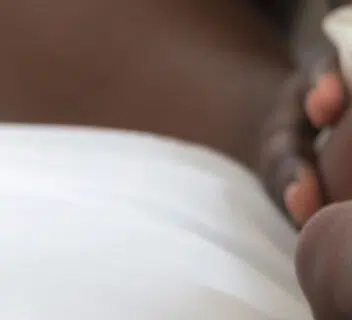Erb Duchenne Palsy or Erb’s Palsy Lawsuit | Birth Injury Attorney
In humans, damage to the muscular and nervous systems can cause serious functional problems with everyday activities. Erb’s palsy is one such condition. Erb’s palsy can make it difficult to lift one’s arm or grasp objects. It is a birth injury caused by damage to the brachial plexus nerves during labor and delivery.
If you or a loved one suffers from Erb’s palsy, a birth injury malpractice lawyer may be able to help you recover compensation. You can be compensated for a range of losses, including medical expenses and pain and suffering damages.
What is Erb’s Palsy?
Erb’s palsy, also known as Erb-Duchenne paralysis, is a nerve condition that causes weakness or loss of muscle function in the shoulder, arm, and hand. It is the most common form of brachial plexus palsy, and involves the upper nerves in the plexus.
The brachial plexus is a group of five nerves that connect the spine to the arm and hand and enable your shoulders, arms and hands to feel and move. Erb’s palsy occurs when the brachial plexus nerves are stretched or torn.
Is Erb’s Palsy a malpractice?
Birth Trauma and Erb-Duchenne Paralysis
Shoulder dystocia happens when an infant’s shoulder gets caught behind the mother’s pubic bone during childbirth. It is a common cause of birth injuries like Erb’s palsy by medical providers. If a medical provider pulls on the baby to try and extricate them, the nerves of the brachial plexus may stretch or tear.
Some other causes of Erb’s palsy injuries include:
- Pulling the infant’s shoulders during a head-first delivery
- Turning the baby’s head or neck to the side during labor or delivery
- Tugging on the infant’s feet during a breech delivery, which may put too much pressure on the baby’s arms
- Fractured collarbone or shoulder dislocation during labor and childbirth
- Using forceps or vacuum delivery
Erb’s Palsy Risk Factors
Risk factors associated with shoulder dystocia should be addressed by an OB-GYN during pregnancy.
Examples of risk include maternal obesity or diabetes, abnormal pelvis shape, high infant birth weight, carrying more than one infant, receiving medications such as oxytocin or epidural during labor, and previous pregnancies involving shoulder dystocia.
Failure to identify these risk factors and account for them during childbirth could give rise to birth injuries like Erb’s palsy. This sort of mistake would likely be considered medical negligence and could lead to liability.
If you decide to bring a claim against the medical professionals and facility where you gave birth, your Erb’s palsy lawyers will obtain copies of your medical records and thoroughly investigate whether your doctor addressed these issues during your treatment and determine whether medical negligence occurred before or during childbirth.
Types of Brachial Plexus Injuries
There are four types of Brachial Plexus injuries that happen with Erb Duchenne Palsy. They are:
- Brachial Plexus Neuropraxia Injury
- Brachial Plexus Neuroma Injury
- Brachial Plexus Nerve Rupture Injury
- Brachial Plexus Nerve Root Avulsion Injury
Brachial Plexus Neuropraxia Injury
The most common type of Brachial Plexus injuries is Brachial Plexus Neuropraxia. It occurs when the nerves are stretched, but they are not torn. Brachial Plexus Neuropraxia symptoms are stinging or burning sensations. Although it usually resolves on its own, Neuropraxia treatment for a baby may include physical therapy or hydrotherapy.
Brachial Plexus Neuroma Injury
When nerves that have been torn heal and leave scar tissue, neuroma can occur. The scar tissue puts pressure on injured nerves, which prevents them from conducting signals to the muscles in the arm. Children with neuromas often make only a partial recovery.
Brachial Plexus Nerve Rupture Injury
When the nerve is torn, the injury does not heal on its own. In most cases, rupture requires nerve grafting surgery to repair nerves. Although it is possible to repair a rupture with surgery, a child who suffers a rupture will continue to have some weakness in the shoulder, arm, or hand.
Brachial Plexus Nerve Root Avulsion Injury
The most serious type of Brachial Plexus injuries, avulsion happens when the nerves are torn from the spinal cord, resulting in permanent muscle weakness and paralysis. Although surgery can help repair torn nerves, they cannot be reattached to the spinal cord.
Treatment for Erb Duchenne Palsy and Erb’s Palsy Injuries
Erb’s palsy injuries often require costly treatment, such as surgery, medications, and ongoing therapy. In some cases, these treatments may take years to complete. We encourage you to get in touch with a qualified attorney for guidance on what treatment you should prioritize, and what could be paid for in the event of a lawsuit. An Erb’s palsy injury attorney can evaluate your case and determine whether you may be eligible for compensation for your child’s medical expenses and other damages.
Nerve repair is a slow process and can take anywhere from a few months to several years, if a full recovery is even possible.
The primary nonsurgical treatment for Erb’s palsy is physical therapy. In addition to seeing professional physical therapists, parents and caregivers need to take an active role in helping infants keep their functioning muscles strong and joints limber. There are specific exercises that help improve and maintain the range of motion in the shoulder, elbow, wrist, and hand. This can also prevent joints from becoming permanently stiff (a condition called joint contracture).
If there is no change over the first 3 to 6 months of treatment, your doctor may suggest surgery on the nerves to improve arm and hand function. Although nerve grafting, nerve transfer, and tendon transfer surgeries can help repair nerves, typically they don’t restore normal function and aren’t as effective in older infants and children.
Can you sue for Erb’s Palsy?
Filing an Erb’s Palsy Injury Claim
The physical, emotional, and financial costs of living with Erb’s palsy should not be underestimated. Many children who suffer from Erb’s palsy will be permanently afflicted with weakness in the shoulder, arm, or hand. The affected arm may even dangle and appear smaller than the unaffected arm. This size difference becomes more noticeable with age, which can cause emotional and social issues.
Medical treatments (such as surgery, physical and occupational therapy, and adaptive devices) can be extremely costly, especially if the treatment also requires long term care. As such, damages in Erb’s palsy cases tend to be significant.
The claimant is also likely to be entitled to damages that include pain and suffering, emotional distress, and wage loss. The value of an Erb’s palsy claim will depend on the extent of the injuries, how they have affected one’s life, the future prognosis, and the circumstances surrounding the injury’s occurrence.
An Erb’s palsy lawyer can evaluate your case and advise you of your options.
Contact Our Erb’s Palsy Lawyers Today
If you believe that you have an Erb’s palsy claim, call us as soon as possible to consult a birth injury malpractice attorney or contact us online. Consultation is free and confidential – if you decide to not move forward with your case, there is no commitment.
Further, our Erb’s palsy injury attorneys work on contingency, which means you won’t incur any out-of-pocket costs. In other words, you pay absolutely nothing (unless our attorneys successfully recover compensation on your behalf).
We look forward to speaking with you.




